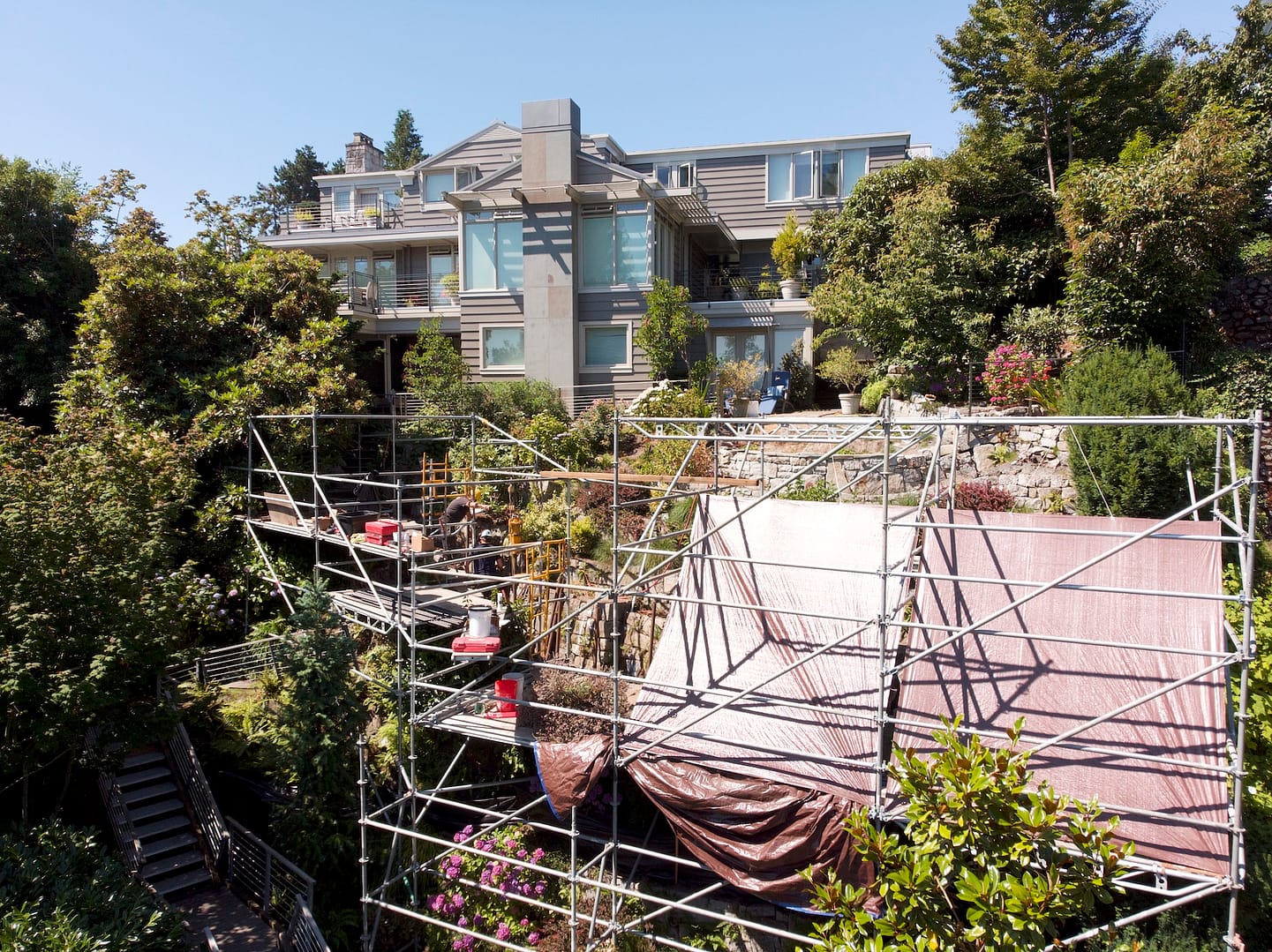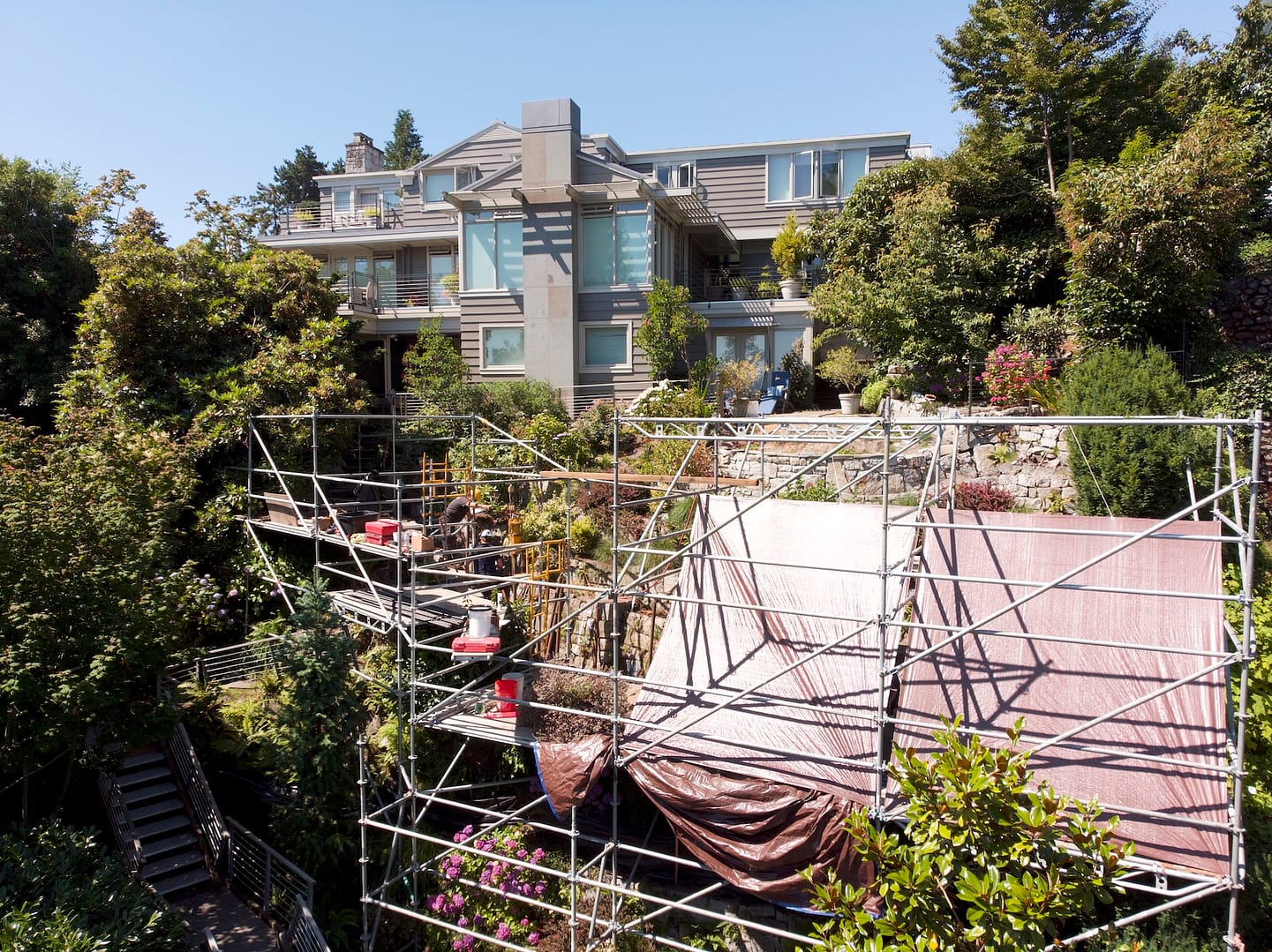Laurelhurst Hill Stabilization
The Problem
Our client, who lives in Seattle, in the Laurelhurst neighborhood has a gorgeous home on one of the hillsides overlooking Lake Washington. The problem is, their hillside was becoming unstable. Many of the homes in the Pacific Northwest, especially those built on hillsides have the same problem. The reason is, much of the soil in the Pacific Northwest is wet. It means that there’s room for movement over time. This can lead to structural damage, and in cases where the situation is not remidied, excessive damage to the home.
The Solution
We met with our client to understand the scope of the situation. They were looking for a team / contractor that could mitigate the problem of the hillside. To do this, we worked with a structural engineer and a geo tech. The structural engineer designs the wall for stabalizing the hillside. The Geo Tech determines the soil composition and what types of piles and anchors to install so that the hillside is properly retained. Soil in the Pacific Northwest can change in as little as five feet in some locations. This means we could be dealing with different soils throughout the project.
Permitting is another critical part of the process. You cannot do any foundation work without a proper permit. We helped our client navigate the permitting process, to make sure everything was in line before we began the work.
After the plan was determined and permitting was good to go, we set up scaffolding, allowing us to access different all areas of the hillside to be stabalized. We drove piles, which are two inch diamater steel pipe with quarter inch thick wall into the ground to hold our new eight inch thick shot-crete retaining wall. When we reach load bearing soil, we continue to drive the pile until there is no movement for one minute to make sure we’ve reached load bearing soil.
We drove 18 grouted anchors as tiebacks because the helical anchors origionally called for by the geo tech were unable to be installed because the soil was so dense.
Then we cut and tie rebar for the new retaining wall specified by the structural engineer. We then install high back anchors in this case two and seven eights inch diamater inch piles with eight inch adn ten inch hillicies twentyfive horizontally into the hillside. These act as anchors or tiebacks. We then shoot an eight inch thick shotcrete wall to cover the rebar and the tiebacks.
Once the shotcrete has cured, approximately three weeks, we then lock off the tiebacks with wedge-washers and eight inch by eight inch by half inch thick plates. The hillside is now stabalized.
The Results
50 piles later and 18 grouted tiebacks and we successfully stabilized the hillside. As a part of any job, we guarantee our installation per the engineer’s drawings and the geotechs observation. It means as a homeowner yo have the peace of mind knowing the stabalization of the hillside meets the requirements that the engineer and geotech drew up.






